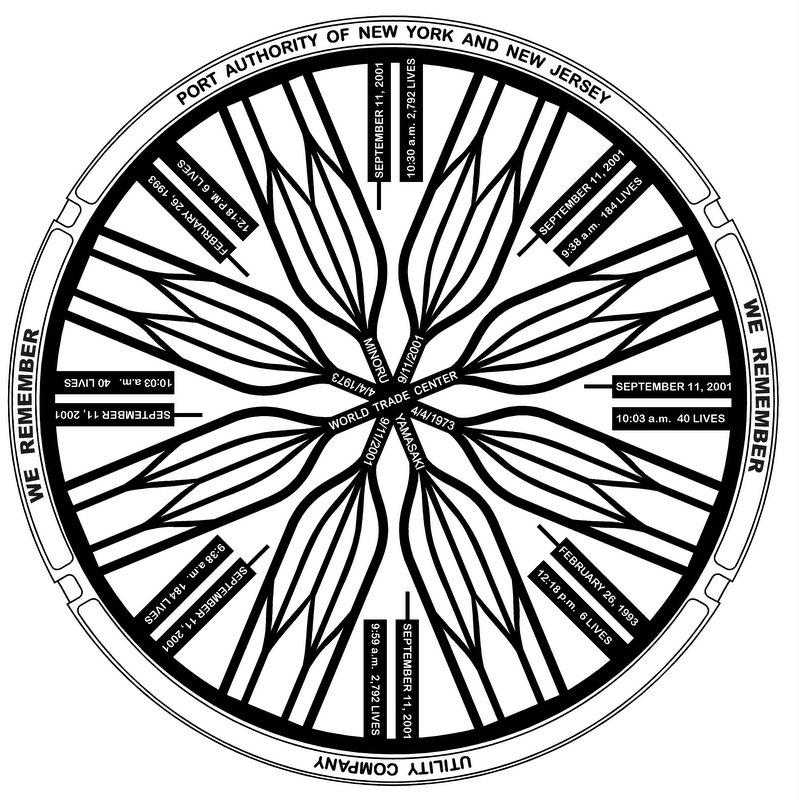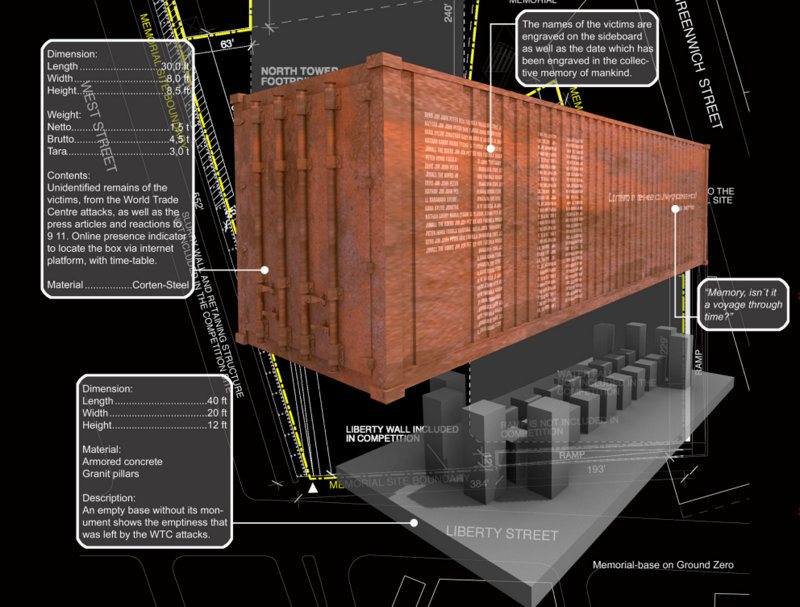 9/11 Memorial Competition Entry: Wiktor Szostalo, Poland/United States
9/11 Memorial Competition Entry: Wiktor Szostalo, Poland/United States
This following article was written by Lester Levine, author of the newly released book 9/11 Memorial Visions: Innovative Concepts from the 2003 World Trade Center Site Competition. Levine is a New York City-born poet and a management consultant now based in North Carolina. He says that curiosity led him to read through all 5,201 entries from the 2003 9/11 Memorial competition. In the book prospectus he writes, “I was a voyeur looking into shattered souls, a wide-eyed viewer into a hugely complex range of human creativity. I became enthralled.”
Levine also has several personal connections to the World Trade Center: He worked across the street from the site in the early 1990s, knew someone who was injured in the 1993 bombing, and his former boss was killed in on 9/11. His wife also knew a few people who lost their lives. Both him and his wife felt compelled to enter the 9/11 memorial competition themselves in 2003, which he says they did as “a cathartic experience. If we were inspired to enter, I wanted to understand other entrants’ reactions to this existential, world-altering event.”
This exploration turned into his newly released book, which tells the personal stories of those that submitted entries. He writes, “These stories uniquely illuminate how visceral reactions to powerful historic events get translated into creative expressions by both artistic and ordinary people, enabling broader and deeper thought about the relation of memorial structures and spaces to the history, geography, technology and cultural diversity of our 21st Century world.”
We are excited to share this article he has has written for us that looks at ten of the innovative ideas, arranged thematically, from the 9/11 Memorial competition that can be applied as inspiration for future memorials.
When I began the first-ever review of the 5,201 entries into the 2003 World Trade Center Memorial Design Competition, I had no idea what I might find. While most turned out to be variations of existing memorial constructs, a small portion genuinely challenged how public memory might be honored. It was the cusp of the new century with great change, especially in technology. I was intrigued by these divergent ideas and wanted to plumb their source.
And so my journey moved to the creators to learn the stories behind their ideas. These became a book, 9/11 Memorial Visions: Innovative Concepts from the 2003 World Trade Center Site Memorial Competition (McFarland & Company, 2016). This article provides a sampling.
Although the designs were specific to the 9/11 event, many of the core ideas could be used for future public memorials. Unfortunately, given our world, there will likely be more of them. Here are 10 thoughts for the future…you can learn more about each of these and many more in the book. Additional information is also available at the 9/11 Memorial Visions website and the accompanying Facebook page.
1. Memorials Without Borders
 9/11 Memorial Competition Entry: Michelle Brody, New York City
9/11 Memorial Competition Entry: Michelle Brody, New York City
Most memorials are location specific. Some have been at multiple sites where victims lived, as the more than 50,000 sidewalk markers in Europe for those killed in the Holocaust, “stolpersteines” (literally “stumbling stones or blocks”). Many entrants wanted the 9/11 memorial to go beyond “Ground Zero” in New York City. Here are two examples of memorials that go beyond existing borders from an entire chapter of the book.
One expanded border memorial idea was from Michelle Brody of New York City. She proposed commemorative manhole covers across Lower Manhattan to remind people walking or driving as an “everyday” memory:
Michelle described the core design as a “mandala”, a kind of sacred space for meditation. She imagined a person at a cover “creating their own memorial” via a private experience in a public space.
Other entrants envisioned boundaries much further. Austrians Joel Cannive and Marc Kerger proposed a traveling memorial to allow people from the 82 countries represented by the victims to remember without necessarily going to New York City. They designed a kind of memorial crate that could be shipped by a cargo plane from country to country:
 9/11 Memorial Competition Entry: Joel Cannive and Marc Kreger, Austria
9/11 Memorial Competition Entry: Joel Cannive and Marc Kreger, Austria
A quote on the entry frames the concept: “Memory, isn’t it a voyage through time?” They also implied that the interest would continually bring forth 9/11 memories at each stop by imagining headlines in local newspapers telling about the memorial and the local victims.





